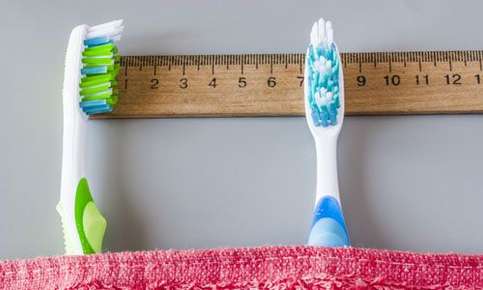
Adaptive Tools Make Oral Hygiene Easier for People with Special Needs
Performing basic oral hygiene tasks can be challenging if you have a disability, injury or condition that makes it difficult to use a toothbrush and dental floss. Your oral health doesn't have to suffer when you use a few tricks and devices that will help you keep your smile clean and fresh.
Toothbrush Adaptations and Options
It's difficult to hold a toothbrush correctly if you lack fine motor control in your fingers or hands. Unfortunately, if you don't brush thoroughly or regularly, plaque will begin to build up on your teeth. Plaque buildup increases your risk of tooth decay and can also be a factor in gum disease. The sticky biofilm eventually turns into tartar, a hard deposit that irritates your gums. The transformation from plaque to tartar can occur in as little as 10 days.
Adding a larger or longer handle to your toothbrush may make it easier to hold and control the brush. Adaptive brush options include:
- Commercially Made Handles. Several companies offer custom adaptive handles made from a mold of your hand to ensure the perfect fit.
- Rulers. Lengthening the brush by taping a ruler to the handle may be helpful if it's difficult to raise your arms or hands.
- Bicycle Grips. Grips are hollow inside and fit over toothbrush to provide a non-slip surface.
- Tennis Balls. Adding a tennis ball to the toothbrush handle offers an inexpensive adaptation option. Simply cut a slit in the ball and slide it over the handle.
The addition of an adaptive device offers demonstrated plaque-reduction benefits. According to a research study published in the Journal of Clinical & Diagnostic Research, elderly denture wearers who used adaptive toothbrush handles experienced a 13 percent reduction in plaque.
Battery-operated power toothbrushes are a good choice if brushing with a manual brush is too difficult. If you plan to buy a power toothbrush, compare the weights of various models and the location of the on/off button. If the brush is too heavy or difficult to turn on, you may soon stop using the device.
Flossing Options
Maneuvering string or tape floss between the teeth isn't easy when an intellectual disability or physical condition affects your ability to use your hands. Although it may be tempting to skip flossing sessions, regular flossing removes plaque from between teeth and can reduce your cavity and gum disease risk. Floss holders, interdental brushes or power flossers may simplify the task.
Helping Another Person with Oral Hygiene
These tips may be helpful if you help a child or other family member with oral hygiene:
- Clean from Behind. It's usually easier to brush another person's teeth if you stand behind him or her. Make sure that the person's head is fully supported before you start.
- Take Your Time. Break up brushing into several shorter sessions if the person can't tolerate two minutes of brushing. Focus on one section of the mouth in each session.
- Add Another Brush for Chewers. If your family member likes to chew on the toothbrush, place the head of another brush on the opposite side of the mouth. Your relative can chew on the brush while you clean the opposite side of the mouth. The extra brush can also be used to prop open the mouth if your family member can't hold his or her mouth open.
- Use Techniques to Decrease Gagging. Gagging may be less likely to occur if you start brushing at the back of the mouth. Brushing with a sulcus brush may also decrease gagging in some people. Sulcus brushes have two rows of bristles rather than three, which may be more comfortable for people who have strong gag reflexes.
- Experiment with Brush Types. Manual, power or three-sided brushes can all be good options, depending on your relative's condition. Three-sided brushes consist of three toothbrush heads mounted on one handle. The brushes clean the front and back surfaces of teeth at the same time, decreasing brushing time.
Sources:
U.S. Department of Health and Human Services: Dental Care Every Day
http://dhss.alaska.gov/dph/wcfh/Documents/01-External/DentalCaregiverGuide.pdf
Journal of Clinical & Diagnostic Research: Toothbrush Handles Individually Adapted for Use by Elderly Patients to Reduce Biofilm on Complete Dentures: A Pilot Study, 5/15
https://www.ncbi.nlm.nih.gov/pmc/articles/PMC4484165/
Special Olympics: A Caregivers Guide to Good Oral Health for Persons with Special Needs, 2008
